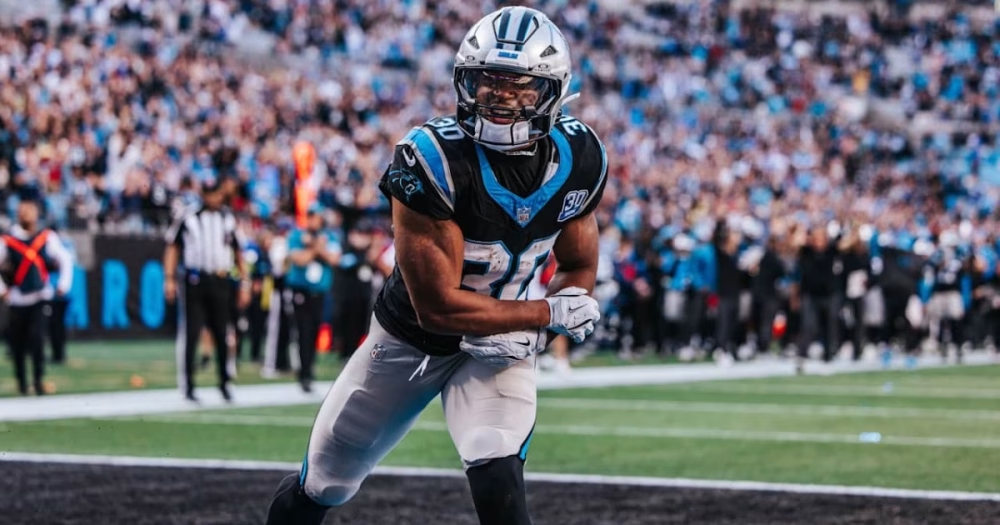The running back position in fantasy football is often the cornerstone of a championship roster, but in 2025, it’s shaping up to be a true minefield of difficult decisions.
Unlike the top-tier “set-it-and-forget-it” options, a significant portion of the running back landscape is filled with players whose fantasy value is shrouded in uncertainty.
Whether it’s questions about workload, injury recovery, offensive scheme changes, or emerging competition, accurately projecting these players’ production will be crucial for fantasy owners looking to gain an advantage in their drafts.
Here are 9 running backs whom I’m finding difficult to rank.
Bucky Irving (Tampa Bay Buccaneers): Irving’s 2025 fantasy value is a fascinating puzzle. While he emerged as the lead back for the Buccaneers in late 2024, displacing Rachaad White, the question is whether he can sustain that workload and production. His efficiency metrics in 2024 (yards after contact, missed tackles forced) were excellent, suggesting he’s a talented runner. However, predicting a full season of lead-back duties, especially for a player who took over mid-season, is always tricky. The Buccaneers’ commitment to a run-heavy approach and his role in the passing game will be key determinants. He’s got breakout potential but also the risk of a committee approach.
Breece Hall (New York Jets): Hall’s 2025 outlook is complex due to a combination of factors. While he possesses elite talent and receiving upside, the Jets’ offensive philosophy under a new coaching regime and the presence of Justin Fields could impact his touch share. Reports suggest a potential committee approach in the backfield, which could cap his volume. Furthermore, the Jets’ offensive line has been inconsistent, and if they don’t significantly improve, Hall could face tough sledding. He has RB1 potential on talent alone, but workload concerns and offensive efficiency make him a high-risk, high-reward pick.
Christian McCaffrey (San Francisco 49ers): McCaffrey remains the undisputed fantasy king when healthy, but that’s precisely why he’s difficult to rank for 2025. His unparalleled usage and production make him the safest top pick if health weren’t an issue, but he’s approaching 29, an age where running backs historically begin to decline. He’s missed a ton of time not just last year but in the last five seasons, and thus there’s a lot of fear of missed time this year. Fantasy owners face the perennial dilemma: draft an explosive scorer with inherent age/volume risk, or opt for a “safer” but lower-ceiling option.
James Cook (Buffalo Bills): Cook’s 2025 ranking is challenging due to the volatility of his touchdown production and his role in the Bills’ offense. While he’s shown efficiency as a runner and a capable pass-catcher, his lighter frame suggests he might not be a high-volume goal-line back. Josh Allen’s propensity to vulture rushing touchdowns also caps Cook’s ceiling. If his impressive 2024 touchdown total regresses (which is common), his fantasy value could take a hit unless his volume significantly increases. His upside is linked to both his efficiency and Buffalo’s red-zone opportunities.
RJ Harvey (Denver Broncos): As a rookie in a Sean Payton offense, Harvey is difficult to rank due to the inherent uncertainty. Payton often utilizes multiple running backs, and the Broncos also have J.K. Dobbins and Audric Estime on the roster. While Harvey has the skillset to be a dynamic play-maker, his exact role and workload are unknown. He’s expected to have a significant pass-catching role, which boosts his PPR value, but splitting carries could limit his rushing upside. He’s a high-upside rookie, but the potential for a committee backfield makes his projection speculative.
Chuba Hubbard (Carolina Panthers): Hubbard’s 2025 ranking depends heavily on the Panthers’ offensive improvement and his hold on the lead-back role. He emerged as a workhorse in 2024, but the Panthers’ offense was largely ineffective. While Jonathon Brooks is out for 2025, the team still added competition to the backfield. Hubbard’s efficiency as a runner is encouraging, but his lack of receiving prowess limits his PPR ceiling if he’s not getting consistent red-zone opportunities on a better offense. He’s a volume-dependent RB2 with upside.
Joe Mixon (Houston Texans): Mixon’s 2025 ranking hinges on his continued role as the undisputed lead back in Houston and the overall efficiency of the Texans’ offense. While he’s consistently been a high-volume player, his age (approaching 29) and the physical toll of a running back’s career raise concerns. If the Texans introduce a more significant complementary back or if his efficiency dips, his fantasy value could suffer. However, if he maintains his robust workload in a potent offense, he could outperform his ADP. His consistency is there, but age is a factor.
Isiah Pacheco (Kansas City Chiefs): Pacheco’s 2025 fantasy outlook is challenging due to his running style and the Chiefs’ offensive dynamics. He’s a high-energy, physical runner who consistently falls forward for extra yards. While he’s the lead back in an elite offense, the Chiefs’ passing game, led by Patrick Mahomes, often dictates offensive flow. His lack of consistent high-volume receiving work caps his PPR upside, making him reliant on rushing touchdowns. Injury concerns due to his aggressive running also factor in. He’s a safe floor RB2, but reaching RB1 status requires more passing game involvement or a significant touchdown surge.
Travis Etienne (Jacksonville Jaguars): Etienne’s 2025 ranking is difficult because of his 2024 struggles and the ongoing backfield competition with Tank Bigsby and rookie Bhayshul Tuten. While he has clear talent and lead-back potential, his efficiency dropped in 2024, and the Jaguars seem committed to involving Bigsby and, presumably, Tuten. His touchdown production could be volatile, and if he doesn’t recapture his earlier explosiveness, he risks falling into a frustrating committee. The Jaguars’ overall offensive improvement under Trevor Lawrence will also impact his scoring opportunities. He’s a bounce-back candidate, but the uncertainty in his workload makes him risky and difficult to rank.


